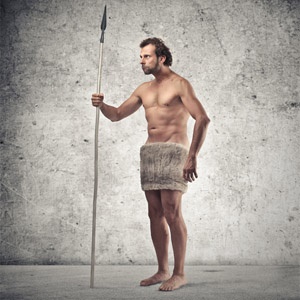
When humans invented the wheel and domesticated horses thousands of years ago, enabling a transition from hunting and gathering to farming, they also started developing weaker bones that make modern people more susceptible to fractures and osteoporosis, according to a new study.
Stationary lifestyle led to thinner bones
Scientists analysed the remains of Europeans who lived at various times over the past 33,000 years and found the more stationary lifestyle afforded by farming – not the rise of cities or changes in diet – appears to have led to thinner, more brittle bones in modern humans, compared to our "caveman" ancestors.
"There was a lot of evidence that earlier humans had stronger bones and that weight-bearing exercise in modern humans prevents bone loss, but we didn't know if the shift to weaker bones was driven by the rise of agriculture, or by other causes like diet or urbanisation," said Christopher Ruff, director of the Centre for Functional Anatomy and Evolution at Johns Hopkins Medical Centre in Baltimore who led the study published in the Proceedings of the National Academy of Sciences.
Read: Treating osteoporosis
Osteoporosis, an age-related decline in bone density, today affects millions of people worldwide. After age 50, the condition leads to fractures in about one in three women and one in five men, according to the International Osteoporosis Foundation.
Past research has found that load-bearing play and exercise in childhood, paired with adequate calcium and vitamin D, is the best way to build strong bones for a lifetime.
Ancient humans, however, had denser bones at any age compared to modern counterparts. To understand when and why that difference arose, Ruff and colleagues examined long bones in the legs and arms from 1,842 individuals who lived during the Palaeolithic to Neolithic eras of hunting and gathering in Europe, often known as the Stone Age, as well as during the Roman empire, Medieval times, the Industrial Revolution and the 20th century.
Pinpointing the moment of change
They X-rayed the bones, and made silicone putty moulds of the bone surface. Then they did a computer analysis of the data to help pinpoint the moment in human history that coincided with a structural shift to thinner bones.
Bone strength started declining in the femur and tibia bones of the leg about 7,000 years ago in the Neolithic period, as rudimentary farming practices began to take hold, and continued until about 2,000 years ago in the Roman period, the analysis found.
"The decline continued for thousands of years, suggesting that people had a very long transition from the start of agriculture to a completely sedentary lifestyle," Ruff said. "By the medieval period, bones were about the same strength that they are today." Changes in the humerus bone in the upper arm were smaller and less consistent.
Read: Symptoms of osteoporosis
Looking at both the upper and lower body, and showing a greater reduction in bone strength in the lower limb, "rules out a change like less protein or less calcium in the diet," said Steven Churchill, an evolutionary anthropologist at Duke University in Durham, North Carolina, who provided some of the Stone Age data but was not involved in the study.
In the legs, researchers also found that strength related to front-to-back motions associated with running or walking long distances declined more dramatically than strength linked to side-to-side motions tied to bending, lifting and pivoting.
The findings only apply to Europeans, the study team notes, and they cannot say whether the same pattern of changes occurred in other parts of the world.
How to improve bone health
And it is still possible for people to improve their bone health, Ruff said.
"If we were as active as hunter gatherers, which isn't possible in modern culture, we probably wouldn't have any problem with osteoporosis," he said.
"Starting any form of activity even in middle age or older is going to help you, but you're probably not going to end up with the bones of someone 15,000 years ago."
Read: Risk factors for osteoporosis
Professional athletes may, however, exercise enough to have the bones of cavemen, Ruff said.
"If you look at the difference in symmetry in a pro tennis player's arms, the difference in strength is at least as great as the difference between modern man and Palaeolithic man," Ruff said.
Given how much more sedentary lifestyles have become since Roman times, it's surprising that the bones of 20th century humans didn't become even weaker as technology enabled even less exertion in daily life, Simon Mays, a human skeletal biologist at English Heritage in Portsmouth and visiting lecturer at the University of Southampton in the U.K., said by email.
Mechanization has risen particularly in the past 50 years, said Mays, who wasn't involved in the study.
"I wonder whether improved nutrition in the 20th century has led to thicker bones, cancelling out any bone-thinning effects of increased sedentism."
Read More:
Osteoporosis: make your home fall-free
Could weak bones cause sudden hearing loss?
Osteoporosis: certain drugs can increase your risk of falling
Image: Caveman with spear from Shutterstock




 Publications
Publications
 Partners
Partners











